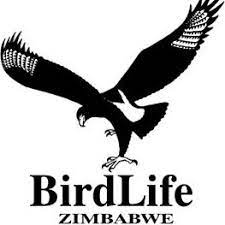IMPORTANT BIRD AREAS
Z011 Bvumba Highlands
PARTIALLY PROTECTED
GLOBAL IBA (Al, A2, A3)
19°07’S; 32°45’E
c. 3 000 ha
SITE DESCRIPTION
The Bvumba, or Vumba, Highlands are about 25 km southeast of Mutare; they form the central section of the Eastern Highlands of Zimbabwe. The mountains are lower than Nyanga, rising to a peak of 1 911 m a.s.l. at Castle Beacon. The climate is generally warmer than Nyanga. Mists are common and are an important source of precipitation for the forests. Harwin et al. (1994) define the Bvumba Highlands as being land including and above the 1 200 m a.s.l. contour; the IBA follows this boundary, which was chosen because it represents the lower limit for most typical montane birds. The Burma Valley (600 m a.s.l.) separates the Bvumba Highlands from the next series of peaks in the Banti/Himalaya range. The Bvumba drop down to the Chicamba Real Dam and Revue River in Mozambique to the east, and to the Save River Valley in the west. Much of the Bvumba consists of privately owned farms and smallholdings amongst large commercial pine and wattle plantations.
The eastern slopes, which receive most of the precipitation, are well forested; the western side is drier and merges into Brachystegia woodland on the lower slopes. Bare granite cliffs and scree slopes with scattered Strelitzia nicolai occur patchily; the peaks are often covered in short montane grassland. Much of the forest has been disturbed through felling, some as recently as the 1940s. The largest forest patch is the well-known Bunga Forest, a mist forest occurring along a mountain ridge. Bunga has been subjected to logging in the past, but most of the forest has recovered well. Syzygium guineense subsp. afromontanum is the dominant species in the undisturbed areas, giving way to Aphloia theiformis, Macaranga mellifera and Maesa lanceolata in the regenerating areas. Dracaena fragrans is the common forest shrub. Most of the Bunga is protected within the Bunga Forest Botanical Reserve. At low altitudes and in the drier areas Albizia gummifera and A. schimperiana are the dominant trees. A dense bracken-briar scrub surrounds the edges of the forests where Pteridiurn aquilinum, Smilax krassiana, Buddleia auriculata, Vangueria randii and Vernonia spp. are common.
BIRDS
The Bvumba avifauna has been well studied, particularly by A.J. Manson and colleagues. A total of 242 species are recorded on the checklist, and the avifauna includes all the typical Afromontane species, as well as holding good populations of several globally threatened and restricted-range species. Swynnerton’s Robin Swynnertonia swynnertoni, Roberts’s Warbler Oreophilais robertsi and Chirinda Apalis Apalis chirindensis are all common here. At least four, probably more, pairs of Blue Swallow Hirundo atrocaerulea use the grasslands. The Bvumba is the type locality for the following endemic Eastern Highlands bird taxa (M.P.S. Irwin pers. comm.): Orange Ground-thrush Turdus gurneyi disruptans, Barratt’s Warbler Bradypterus barrattii priesti, Roberts’s Warbler Oreophilais robertsi and Chirinda Apalis Apalis chirindensis vumbae.
OTHER THREATENED/ENDEMIC WILDLIFE
The Dwarf Chameleon Rhampholeon marshalli occurs in the Bunga Forest. Samango Monkey Cercopithecus mitis, Sun Squirrel Heliosciurus mutabilis and Blue Duiker Philantomba monticola occur throughout the forested area. The Bvumba is well known for several species of rare butterflies including the Vumba Glider Cymothoe vumbui, Emperor Swallowtail Papilio ophidicephalus, Highland Dotted Border Mylothris sagala, Conrad’s Acraea Acraea conradti and Short-tailed Admiral Antanartia dimorphica.
CONSERVATION ISSUES
As with other high-altitude grasslands in the Eastern Highlands of Zimbabwe, the Bvumba grasslands are threatened by the invasion of alien wattle and pine. This has obvious implications for grassland specialists such as the Blue Swallow. There is only a small population of these birds in the Bvumba, so every effort should be made to protect their grassland habitat. The forests on National Parks Estate are well protected, as are most of the forest patches occurring on private land. Agriculture and pine and wattle plantations restrict regeneration and expansion of the forests. The mid-altitude forests on the southern slopes down towards Burma Valley are all on private land and worthy of protection as Botanical Reserves.
Globally threatened
Blue Swallow – Breeding (pairs) – 4 – 6 | Total Numbers – 10 – 15
Swynnerton’s Robin – Breeding (pairs) – 20 – 50 | Total Numbers – 50 – 120
Globally near-threatened
* Plain-backed Sunbird V
RR & BRA | STATUS
Striped Flufftail | Uncommon
Scarce Swift | Fairly Common
Whyte’s Barbet | Fairly Common
Blue Swallow | Fairly Common
Grey Cuckooshrike | Fairly Common
Stripe-cheeked Greenbul | Common
Miombo Tit | Uncommon
Cinnamon-breasted Tit | Rare
Kurrichane Thrush | Common
Miombo Rock-thrush | Uncommon
Orange Ground-thrush | Fairly Common
Swynnerton’s Robin | Fairly Common
White-starred Robin | Common
Barratt’s Warbler | Common
Yellow-throated Woodland-warbler | Common
Chirinda Apalis | Fairly Common
Roberts’s Warbler | Common
White-tailed Crested Flycatcher | Common
Gorgeous Bush-shrike | Fairly common
Olive Bush-shrike | Fairly Common
Gurney’s Sugarbird | Fairly Common
Bronzy Sunbird | Common
Miombo Double-collared Sunbird | Common
Red-faced Crimsonwing | Uncommon
Yellow-bellied Waxbill | Abundant
* – Species does not meet IBA threshold
RR & BRA – Restricted-range and Biome-restricted Assemblage
V – Vagrant
